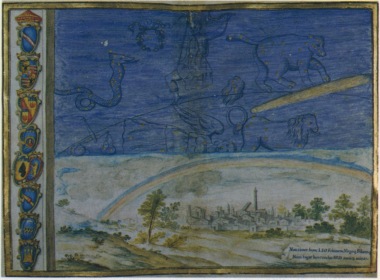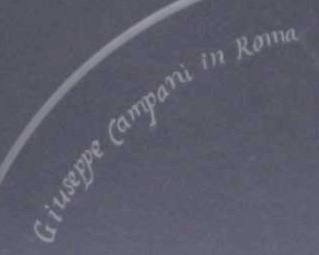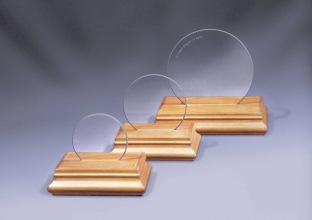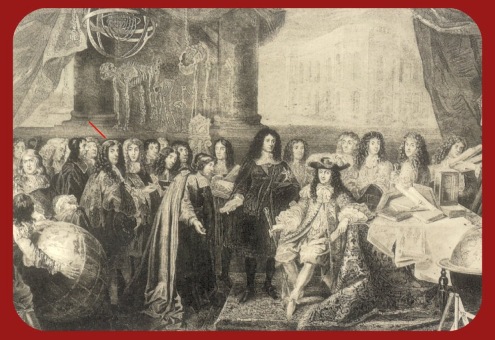|
|
|
|
|
|
Gio
Domenico Cassini (Perinaldo, June 8, 1625 -
Paris, September 14, 1712)
(alias: Gian Domenico Cassini, Iohannes Dominicus Cassinus, Giovanni Cassini,
Jean-Dominique Cassini, Cassini I)
Partially extracted from:
FABRIZIO BÒNOLI, DANIELA PILIARVU; I Lettori di Astronomia presso lo Studio
di Bologna dal XII al XX secolo, Clueb, Bologna, 2001.
Gio Domenico Cassini was professor of Astronomy at the University of Bologna for
twenty years, by the middle of 17th century. He holds a considerable position in
the history of astronomy for his remarkable incentive given to instrumental,
observational and theoretical development of this discipline.
For the relevant scientific works he made in Bologna, making famous the name of
the city, he obtained the citizenship on February 26, 1702.
G.D. Cassini is the first of a long dynasty of scientists. In France he had the
honour to be mentioned as Cassini I.
Cassini was born on 8th June 1625 in Perinaldo, now in the Ligurian hinterland
and at the time in the county of Nice, when that territory still belonged to
Italy. Started the studies with his maternal uncle and then with Giovanni
Francesco Aprosio, he continued in the Jesuit College in Genoa, from 1638 to
1642, studying philosophy, theology and mathematics, and showing a special
interest in poetry, but particularly in astronomy. Under the guide of senator
Gian Battista Baliani, physicist and correspondent of Galilei, still during his
youth he became a famous astronomer to such an extent that the Marquis Cornelio
Malvasia, Senator of the city of Bologna and lover of astronomy, proposed him to
take care of his private observatory in Panzano, near Bologna. Cassini arrived
in Bologna in 1649, 24 years old, and a brilliant, quick carrier begun for him,
so becoming one of the most famous Italian astronomers of all time.
In 1650 he obtained the teaching of Astronomy — ad Astronomiam — in the ancient
Bolognese Studium, which had its seat in the Archiginnasio since about one
hundred years. As Cassini himself remembers in his memoirs, here he had the
opportunity to meet with expert mathematicians and astronomers: Fathers Ricci
and Bettini, Montalbani, Mengoli and, over all, the Jesuit scientists Riccioli
and Grimaldi.
 He
observed in Bologna the comet of 1652, with a specially made instrument,
publishing his first astronomical work, De cometa anni 1652 et 1653, dedicated
to the Prince of Modena Francesco d’Este. As Tycho Brahe had suggested for the
1577 comet, Cassini demonstrated, through his observations, that the 1652 comet
too was much more distant than the Moon: therefore, comets were “celestial
bodies” which moved among planets, perforating their incorruptible spheres, and
not exhalations of the terrestrial atmosphere, as the Aristotelian physics
asserted.
He
observed in Bologna the comet of 1652, with a specially made instrument,
publishing his first astronomical work, De cometa anni 1652 et 1653, dedicated
to the Prince of Modena Francesco d’Este. As Tycho Brahe had suggested for the
1577 comet, Cassini demonstrated, through his observations, that the 1652 comet
too was much more distant than the Moon: therefore, comets were “celestial
bodies” which moved among planets, perforating their incorruptible spheres, and
not exhalations of the terrestrial atmosphere, as the Aristotelian physics
asserted.
At that time the dispute was focused on the choice between the old "geocentric"
system, which claimed an immobile Earth in the centre of the Universe, and the
new "heliocentric" ideas of Copernicus, Kepler and Galilei who presumed, on the
contrary, that the Earth was rotating around the Sun together with all planets,
as it is actually.
In order to decide which system was the real one, it was necessary to measure
more in detail the apparent motions of the Sun and the celestial bodies. James
Bradley and Eustachio Manfredi proved the exactness of the Copernican theories
only one century later, discovering the aberration of light from fixed stars,
but Cassini offered a precious contribution to their development.
The opportunity arose from the enlargement of the Basilica of San Petronio, in
the centre of Bologna. This work caused the destruction of the meridian line
traced by Egnazio Danti one century before to measure the length of the solar
(tropic) year, in order to define the Gregorian Reform of the calendar.
Cassini proposed to realise a new great meridian, the biggest in the world:
almost 68m long and with a 27m high hole through which the image of the Sun disk
penetrates into the church. He asked to make a new measure of the length of the
solar year to put an end to the debate on the introduction of bissextile years
in the reformed calendar.
But his real aim was to disentangle the controversy on the irregularity of the
solar motion. Supporters of the geocentric system stated that the observed
yearly variation of the Sun velocity was apparent and not real, as obvious
consequence of the yearly variation of the relative distance between Earth and
Sun. On the contrary, the Second Kepler’s law stated that the Sun velocity
variation must be real.
He measured how much the diameter and the velocity of the solar image varied
during the year, with accurate observations of the Sun disk projected onto the
floor of the church. In this way he demonstrated that the apparent motion of the
Sun was in line with the expectations of the Second Kepler’s Law, i.e. that
celestial bodies move more quickly when they are closer to the Sun and slower
when they detach from it. Isaac Newton with his Universal Gravitation Law will
explain the physical interpretation of such phenomenon some decades later.
Cassini reported his first results in the 1656 Specimen observationum
Bononiensum … in D. Petronij templo, dedicated to the Queen Christine of Sweden,
announcing that the motion of the Sun was “really” not uniform during the year
(according to the Second Kepler’s Law) and not “apparently” as
Ptolemaic-Aristotelian and Tychonic systems of the World required.
Thanks to observations made with the big meridian in San Petronio, he obtained a
more accurate value of atmospheric refraction, calculated more precise solar
coordinates, tried to measure Sun parallax and established the obliquity of the
ecliptic with an accuracy of just 22 arcseconds.

 Different
activities took his mind off his astronomical observations for some time. Pope
Alexander VII appointed him Superintendent of Public Waters and Superintendent
of Perugia Defensive Works. He attended to sittings of the Accademia del Cimento
in Florence, taking interest in studies in entomology and in blood transfusions,
but never neglecting astronomical researches.
Different
activities took his mind off his astronomical observations for some time. Pope
Alexander VII appointed him Superintendent of Public Waters and Superintendent
of Perugia Defensive Works. He attended to sittings of the Accademia del Cimento
in Florence, taking interest in studies in entomology and in blood transfusions,
but never neglecting astronomical researches.
In 1661 he developed a method to describe the phases of solar eclipses and in
the following year he published new tables of the motion of the Sun based on the
observations made in San Petronio. Cassini continued to be particularly
interested in comet studies and he was able to foresee the path of two new
comets, appeared on 1664 and on 1665, which he observed with Christine of
Sweden, so opening the way to Halley’s works on comet orbits.
Thanks to the best telescopes produced by skilled Italian instrument makers
available at that time — in particular a 6m-telescope by Giuseppe Campani — he
went on with Jupiter observations broken off on 1652. After the observation of
some spots on the planet — he was the first to discover the big spot today known
as the “Big Red Spot” — he followed Jupiter for 29 rotations, using a new
12m-telescope and calculated the rotational period of the big planet: 9 hours
and 56 minutes, nearby the real one. At the beginning of 1666, he observed some
details on the surface of Mars and determined the rotation period of this planet
too: 24 hours and 40 minutes, 3 minutes less the today accepted value.
He made accurate tables of the motion of Jupiter satellites and published, in
1668, the Ephemerides Bononienses mediceorum siderum. These studies were used
for a long time in the attempt to solve the fundamental problem of finding the
terrestrial longitude. A problem which tormented sailors. More accurate ones
published by Cassini himself in Paris in 1693 replaced his first tables of the
Jupiter satellites. Olaf Römer used the Bolognese tables in 1675, to obtain the
velocity of light.
Among the many Cassini’s activities, the lectures he had at the University of
Bologna, and for which he obtained a lot of acknowledgments, were of no less
importance. We find the name of Io: Dominicus Cassinus on the Rotuli dei lettori,
legisti e artisti dello Studio Bolognese (i.e. the Register of the University
Professors), marked at the “fourth post meridian hour”, from the academic year
1650/51 till 1664/65. Engaged for different activities out from Bologna, he was
replaced by Geminiano Montanari in 1665/67. Since 1666/67 he had lectures at the
“fourth ante meridian hour”, a teaching more prestigious than the post meridian.
He went on with this lectures till 1669/70, when he left for France, although
his name was signed on the Rotuli, till his death, as «absens cum reservatione
lecturae» («absent, but the lecture is reserved»): the Bolognese Senate had set
its hopes on Cassini’s return in the city.
A 1666 manuscript in Latin, from the Paris Observatoire, contains part of the
lectures Cassini had in Bologna University in those years. The index wrote by
Cassini himself suggests the subjects discussed in the lectures. They are
concerned with the apparent motion of the fixed stars, the astronomical
reference systems and the fundamental circles on the celestial sphere. No one
clear statement in favour of the heliocentric system can be found in all the
manuscript, probably because the required official style of the lectures and the
local cultural environment did not consent it. Anyway, many sentences in the
text suggest a preference of the author for the system of Copernicus. Some more
“didactical” manuscripts by Cassini are in the State Archives of Bologna.
The fame of Cassini's Ephemerides Bononienses mediceorum siderum, as well as his
important discoveries on planets and his studies on the Sun, reached Jean Picard,
esteemed French astronomer, which recommended Cassini to Jean-Baptiste Colbert,
Minister of King Luis XIV. Colbert was trying to attract in France the most
famous foreign scientists, being desirous of increase the prestige of the new
Académie Royale des Sciences. As a consequence, having invited Christiaan
Huygens in 1667, he offered to Cassini to become a correspondent member of the
Académie and the following year he invited him to Paris for the setting up of
the new Observatoire Royal. After difficult negotiations among the Bolognese
Senate, the Pope Clemens IX and the French Minister, an agreement was reached,
thanks to which Cassini could maintain Italian charges (and the corresponding
remuneration), but he obtained the consent to spend some time in French. As a
matter of fact, the departure of Cassini from Bologna, on 25th February 1669,
marked the end of his activities in Italy.
Cassini lived for two years at Louvre, before moving at the Observatoire Royal,
where he defined an accurate daily program for researches and observations. He
obtained the best modern instruments, as Campani and Divini telescopes,
micrometers, quadrants, octants and a 40m high wood tower to use the object
lenses with the longest focal length.
In 1673, despite being recalled to Italy both by the Senate of Bologna and by
the Pope, Cassini definitively decided to live in Paris and married. His son
Jacques, born in 1677, was brought up at the Observatoire, where he was destined
to succeed his father.
 In
Paris, Cassini carried out further astronomical observations and discovered, for
example, the cause of the zodiacal light phenomenon, due to the reflection and
diffusion of sunlight on interplanetary powders scattered in the plane of the
terrestrial orbit; as well as the Saturn satellites — Iapetus, Rhea, Tethys and
Dione — and the separation in the ring (now carrying his name) which surrounds
the planet. In his honour and in the honour of a great Saturn researcher,
HUYGENS, the space mission heading towards this planet was named “CASSINI-HUYGENS”.
Later on he drew a big lunar map and proposed one of the first theories that
tried to explain all lunar movements as a whole. Great importance has to be
given to the calculation of the Sun distance obtained, thanks to the Third
Kepler’s Law, from Mars observations carried out by him in Paris and
simultaneously by Jean Richer in Cayenne. From their observations, published in
1679, they obtained a solar parallax of 9.4 arcseconds (about half of an
arcsecond more than that one today accepted): it corresponds to a mean distance
of 139 millions of kilometres (currently 149 597 870). At last that enabled
astronomers to assign to the Solar System its right dimensions.
In
Paris, Cassini carried out further astronomical observations and discovered, for
example, the cause of the zodiacal light phenomenon, due to the reflection and
diffusion of sunlight on interplanetary powders scattered in the plane of the
terrestrial orbit; as well as the Saturn satellites — Iapetus, Rhea, Tethys and
Dione — and the separation in the ring (now carrying his name) which surrounds
the planet. In his honour and in the honour of a great Saturn researcher,
HUYGENS, the space mission heading towards this planet was named “CASSINI-HUYGENS”.
Later on he drew a big lunar map and proposed one of the first theories that
tried to explain all lunar movements as a whole. Great importance has to be
given to the calculation of the Sun distance obtained, thanks to the Third
Kepler’s Law, from Mars observations carried out by him in Paris and
simultaneously by Jean Richer in Cayenne. From their observations, published in
1679, they obtained a solar parallax of 9.4 arcseconds (about half of an
arcsecond more than that one today accepted): it corresponds to a mean distance
of 139 millions of kilometres (currently 149 597 870). At last that enabled
astronomers to assign to the Solar System its right dimensions.
In autumn 1694, Cassini set out on a long journey to Italy, together with his
son Jacques. The following year he went in Bologna, receiving a warm welcome by
the Senate, which dedicated a medal to him and to the Meridian Line in San
Petronio. With the help of Domenico Guglielmini Cassini made new measures
through the meridian line, rectifying some errors and, above all, observing that
very instant of the Sun transit during equinox in order to check the validity of
the Gregorian calendar Reform and decide whether to add a leap day to the year
1700. The results were published in La Meridiana del Tempio di San Petronio.
On his way back, he passed by Perinaldo and from his birthplace he observed some
eclipses of Jupiter satellite, Io, useful for longitude measures.

Despite his advanced age, in the following years
Cassini contributed to the accurate land measurement of the French territory and
to the creation of the Carte de France, fundamental map for geographical, but
also for military and political reasons. With the support of Jacques, his nephew
Giacomo Filippo Maraldi and some other experts, he measured the meridian arch
from Paris to Perpignan and carried out several astronomical and geodetic
operations. The Carte de France will be completed by his descendants, his son
Jacques, named Cassini II, his nephew César-François, Cassini III and his
grand-nephew Jean Dominique, Cassini IV, who at last presented the
cartographical masterpiece to the Constituent Assembly in 1790. This map
consisted of 182 sheets and was the result of almost 132 years of work.
The Cassini's dynasty ends with Cassini's IV son, Alexandre, jurist and
botanist, who had been removed from the direction of the Observatoire, was
arrested and imprisoned during the French revolution.
The up-to-dateness of his researches is demonstrated by the fact that still
nowadays the result of his studies on tidal interactions among planetary bodies
and on their effect on rotation of satellites — the so-called "Cassini’s Laws" —
are widely used.
Close to his death and almost blind, Cassini dictated his memoirs before he died
in Paris on 14th September 1712, at the age of eighty-seven.
He was buried in the church of Saint Jacques du Haut-pas with a very simple
gravestone «J. D. Cassini – Astronome».
Announcing Cassini’s death, the old friend, Paris Maria Salvago, wrote in a
letter to Eustachio Manfredi, currently in the Archives of the Department of
Astronomy of Bologna:
«… He has passed away, and as a Patriarch, but his name will never die until
skies and stars to be gazed will exist …».
Teacher of Astronomy in Bologna in the years:
1650/51 ad Astronomiam
1651-1665 ad Mathematicam quarta hora pomeridianae
1666-1669 ad Mathematicam quarta hora matutinae
1669-1712 ad Mathematicam quarta hora matutinae (absens, cum reservatione
lecturae)
ORIGINAL WORKS AND SECONDARY BIBLIOGRAPHY
GENEALOGIA DELLE FAMIGLIE CASSINI E MARALDI
From Anna Cassini; "I Maraldi di Perinaldo", Comune di Perinaldo, 2004.
(courtesy of the writer)